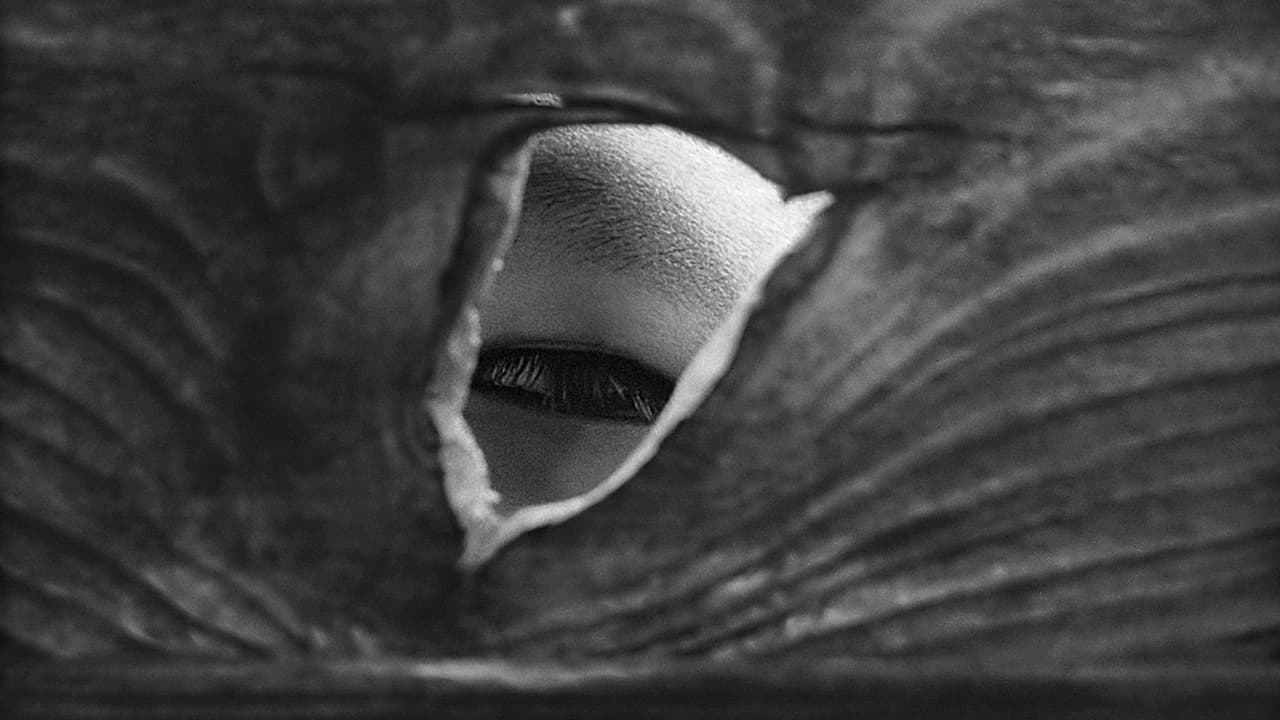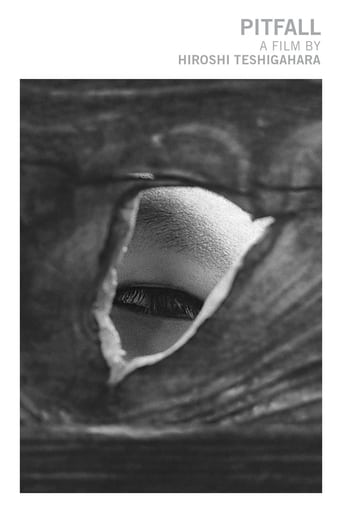

Absolutely unique and bizarre movie in the best sense. It starts as an almost Kafakaesque eerie horror, then becomes a comic ghost story and then an almost Ken Loachian tale of labor struggle. Ultimately it's a cosmic black comedy. That's a lot of narrative tones for one film to cover, but this manages it all with grace and eloquence.
... View MoreViewed on DVD. Cinematography = nine (9) stars; exterior set design = eight (8) stars. In his feature-film maiden voyage, Director Hiroshi Teshigahara demonstrates that he can be a master of the provocative (provocative extraordinary)---when he closes to be--with films that are filled (actually packed in this case) with incidents and shots that evoke as many interpretations as there are viewers (and likely even more with re-viewing!). What you think you see is, well, your unsettling take away. The film elicits a vague sense of dread right from the opening scenes which does not seem to go completely away! Teshigahara's principal tome is about the nastiness of capitalism (coal mine owners (who are never seen)) and the it's exploitation/enslavement of laborers (coal miners). But he also has a lot more on his mind such as: the exploitation of young itinerant coal miners by older former miners; miners who have run away only to be hunted down and captured (like military deserters); mine-owner benefits from inducing conflicts between/within miners' unions; murder mysteries involving contract killings of union leaders; ghosts (both human and canine (the latter may have been eaten by the former)); land rape by coal mining companies (represented by the bleak landscape of abandoned coal fields in Northern Kyūshū); deadly misidentification which isn't what it seems to be; how the dead might confront and try to solve the mystery of their own murders; symbolic use of white; etc. Acting is OK except for: outdoor death scenes which go on and on (and on); and the somnambulism of actress Sumie Sasaki. Exterior locations (depressing landscapes and a river with quick-sand like mud shores) and set design (a ghost town you may have seen in other films) are outstanding. Cinematography (narrow screen, black and white) uses an antique format, but nonetheless is excellent with many elaborate tracking shots and the extensive use of the deep focus photographic process. Lighting is very good except for early on when some scenes are under lit. "Music" (mostly banging on pots and pans with unusual extractions from a harpsichord?) inter grades with sound effects. The former is always cacophonous and jarring, but is quite effective as a scene booster, and, intimately, becomes rather enjoyable. Subtitles are missing for the young juvenile (who only speaks during the early scenes); but the names of all the players who have speaking parts seem to have been translated along with production department leads. Worth watching several times if only to experience ongoing changes in your perspective. WILLIAM FLANIGAN, PhD.
... View MoreAlthough structurally and aesthetically experimental cinema, Teshigahara's debut proper already carries all the trademarks of an assured author and although a bit rough around the edges here and there it shows a director experimenting with his craft even as he perfects it. Japanese new-wave ferried to its logical conclusion even as it takes its first baby steps.Based on a story by Kôbô Abe, PITFALL explores the myriad possibilities that emerge from the space where life and death overlap, as a poor miner is murdered under mysterious circumstances in the marshes near an old ghost town. His murderer, an alluring white-clad figure, buys off the silence of the one witness, a woman operating a candy store in the ghost town district, and disappears as mysteriously as he appeared. In the mean time the murdered man wakes up next to his corpse only to discover he's now a ghost.While THE SIXTH SENSE milked a very similar idea for maximum mainstream appeal, shock twists and shallow thrills, Teshigahara is wise to allow his material to breathe. Even though a very pragmatic subplot about two rival labour unions introduced in the end of act two detracts from the existential nature of the story, like all great storytellers Teshigahara never settles for the convenient and tidy, refuses to explain what the viewer most needs explained. Personal interpretation is very important in any work and particularly in something as haunting as this. Who is the killer? Why is he doing it? Questions left open, the character cleverly typed as a seriocomic grim reaper of sorts riding around in his moped, a manifestation that invokes notions of fate by the very nature of his acts. Is there not meaning when one is not aware of it? Teshigahara pits the dead against the dead, the living against the living and everybody against each other, ghosts quizically examining their corpses and wondering the reason of their deaths, the living deaf to their protestations and too busy being suspicious of each other. A world revolving around a discordant axis, thrown off balance and left for us to explore its geometry.Teshigahara's direction reflecting the uncertainty and disorientation of the plot as much as Toru Takemitsu's dissonant score. A POV shot of a child introduced only for the child to walk inside its own POV shot. Jarring jump cuts that send characters jumping through space. Construction works photographed in all their derelict, abandonded glory, a ghost world for the dead to haunt. Notions of hell on earth. The ghost of the murdered man complaining he's hungry as winds rise in the soundtrack. A pack of dogs ascending a steep slope like other Sissyphi. Very precise, very geometric, the work of an assured visual director.
... View MoreThis film is very difficult to find in the West. It's not on video and you'd probably have to be lucky and find it at a film festival or a revival house. It's the first collaboration between director Teshigahara, writer Kodo Abe, and composer Toru Takemitsu, who went on to make the more widely available WOMAN IN THE DUNES and FACE OF ANOTHER. It's not quite as strong as WitD but is on par with FoA. This is a satire about a deserted town who's inhabitants are ghosts swallowed up by corruption. Teshigahara's direction is solid and Takemitsu comes up with another appropriately dissonant score balancing tension and humor. It's worth seeing for anyone interested in the three principal collaborators, particularly since opportunities to see it are rare. Takemitsu in particular could almost single handedly make a movie worth watching.
... View More